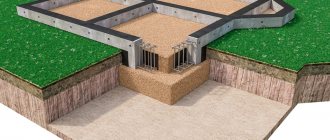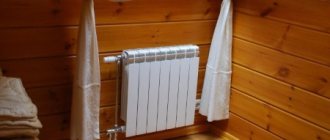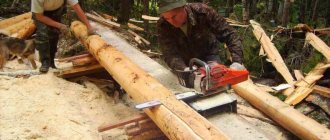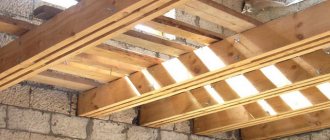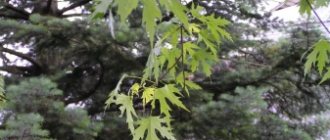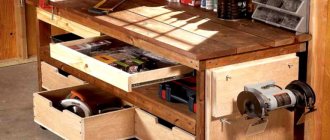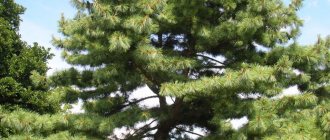What types of porch are there?
Depending on the design of the house and the style in which the site is designed, the design of the porch is also determined. The material from which the porch to the house is built, the shape of the porch, its height, the presence or absence of accompanying elements (canopy, mesh, railings) vary.
Depending on the complexity of the work, you can make a porch for your home yourself or invite specialists.
Wooden porch
When choosing the material from which to make a porch in a private house, many choose wood. It is practical, relatively cheap, easy to process and lasts quite a long time. For wooden private houses, this choice is obvious. But you can also attach a wooden porch to concrete and panel houses.
To make the entrance structure, dry edged boards (preferably softwood), sawn logs or timber are suitable. Even beginners can do the job.
The simplest porch does not even require a platform - flooring, just a few steps are enough.
If there is an area on the porch for decoration (for example, flower pots) or chairs, then this design is called a patio.
In the case when the porch is combined with a room under a canopy, we are talking about a porch - a veranda.
At the dacha, the simplest option is most often found, where the height of the stairs is slightly higher than the height of the foundation. The presence or absence of railings is a matter of convenience and taste.
It must be remembered that even the most primitive porch made of wood, with or without railings, needs protection from mold, insect parasites, and moisture. Wood must be treated with a protective compound or paint during the construction phase and the coating must be renewed regularly. In this case, the entrance group will last a long time.
Concrete porch
A concrete porch and entrance staircase to a private house is a monumental structure, it requires a lot of effort and labor, and it is very difficult, almost impossible, to cope with its construction on your own without special devices, equipment and skills.
For construction, it is necessary to build a frame from reinforcement, install it and gradually fill it with concrete.
The concrete porch in front of the entrance to the house is poured into wooden formwork. It becomes an extension of the house, the height is equal to the height of the foundation, but it is recommended to put a layer of mineral wool between the wall and the porch.
The construction of such a porch can be carried out in stages, pouring the steps one by one (each tier dries for about a week), or entirely (drying will take about 10 days, but such work is more difficult, more painstaking and requires a concrete mixer).
Decorative finishing is carried out using building mixture or cement. If desired, tiles are laid on them. The final design of the porch for a country house is different for everyone.
Metal porch
A house with a metal porch looks impressive; this material is strong and durable, but working with it requires not only tools, but also skills.
In some cases, only the supporting frame is made of metal, in others the metal porch for the dacha is similar to the wooden one, in others they build a monumental structure on the foundation, decorating it with beautiful forged parts.
To make the steps of stairs, corrugated metal sheets are often used, which adhere well to shoes and do not slip in rainy weather.
In addition, steps can be made of wood or porcelain stoneware. The upper platform in front of the door is also made from the same material.
It must be remembered that metal hardens in cold weather, becomes slippery in rain and ice, and therefore can pose a danger to residents of the house.
Brick porch
The design of a brick porch is, of course, attractive, but in terms of performance characteristics this material is far from the best. What is a porch? This is a place that is walked on very often, it can withstand heavy loads, so it must be strong and reliable.
A porch for a private house made of brick is beautiful; next to a brick house it looks appropriate and organic. But brick is expensive to use. Working with it requires skills and a scrupulous approach. In addition, you only need to take red burnt brick, other types will quickly become unusable.
If the country house is built of brick and the design requires the same porch, you can trim the wooden, metal or concrete frame with tiles that imitate bricks, or lay bricks in one row on the outside.
Stage 1. Measurements and design
There are no norms that strictly limit any parameters of a porch in construction, so design it based on your own preferences, guided by the following general rules when making calculations:
- Arbitrarily, based on considerations of beauty and comfort, determine the width of the porch.
- Measure the distance from the threshold of the front door to the ground level - this will be the total height of the porch.
- Calculate the depth of the entrance area, which must certainly be greater than the width of the door leaf.
- Determine the value of the total run - this parameter is measured by the distance between the horizontal projection of the initial and last step.
- Based on these parameters, calculate the number of steps - to do this, divide the total height of the porch by the desired riser height.
- Now knowing the number of steps, multiply their number by the required tread width and you will find out the length of the total run.
Advice! The larger you make the total run, the flatter and more comfortable the staircase will be for walking. Structurally, each step consists of a wide horizontal part (professionals call it a tread) and a narrower vertical part (called a riser). A staircase is considered comfortable if the tread width is in the range of 350-420 mm, and the riser height varies in the range of 140-200 mm.
Wooden porch project
Porch foundation: when you need it
Strictly speaking, a foundation is needed when constructing a porch from heavy building materials: concrete, metal, massive wooden elements. The foundation is necessary on soft soils, when facing the porch with decorative stone or brick. It is recommended, at a minimum, to pour concrete and “drown” the wooden structure in it; in other cases, a foundation poured in accordance with all the rules is required. A covered porch is built on the foundation of the house.
Types of porches
This extension can be:
- Simple. This is an extension ladder attached to the landing, with a canopy.
- Built-in. This attribute is completely covered by a canopy.
- Joined. The building is a separate object, which is combined with the house.
If we are talking about a house built of wood, then the best option would be a simple extension. It will be easiest to build a frame porch in this way and will be inexpensive in terms of the cost of building materials.
Canopy over the porch
A porch with a canopy is much more practical than an open one. If in a one-story house the porch can cover the roof slope, then in a cottage a canopy is necessary. The frame for it can be made of wood, welded from metal tubes or a corner.
The materials used for the canopy are tiles, corrugated sheets, slate, and polycarbonate sheets. The canopy can be flat or sloping (preferable, since water does not retain) - single or gable, arched.
Installation of the platform
Actually, the installation of the site comes down to a bunch of supports already filled with concrete. A timber of the same cross-section is used for the framing frame. Then the sheathing is filled.
Reinforcement of the structure is achieved by diagonal inserts between the posts and the bottom frame, which does not reach the concrete platform by 15 cm. Multi-layer moisture-resistant plywood or fiberboard sheets are used as a platform. It is worth noting that the level of the structure should be 3-5 cm lower than the entrance door - otherwise, with high humidity, the wood will certainly swell and the passage will be blocked.
Making stairs
How to make a staircase:
- stringers are cut (from wood) or welded (from metal) - a frame for stair steps;
- the stringers are installed at such an angle that the steps are parallel to the ground;
- stringers are attached to the wall and sunk into concrete;
- steps are attached to them.
The finished structure is treated with a protective compound. Fastening methods depend on the selected material.
Tips for finishing a porch
Porch design ideas can be seen in the photo. There are a lot of design options for the entrance group.
Finishing materials for cladding the porch
The porch to a wooden house is most often made from the same material. It is impregnated or painted with special compounds to protect against pests and adverse conditions.
A concrete porch can be lined with ceramic tiles or decorative stone (brick).
The metal porch is decorated with forged elements.
Errors when installing a porch
To avoid problems, you should take into account possible difficulties and avoid common mistakes:
- the construction of the entrance group must be planned at the stage of building the house and the foundation must be poured simultaneously for both structures;
- the entire wooden structure (including support pillars) must be treated with antiseptic impregnation;
- the platform should be flush with the floor of the house (flush with the door) so that the door does not jam in winter;
- there must be a vapor barrier between the supports and the wall;
- Even for a small wooden platform it is worth pouring a cement foundation.
Fencing
Stairs with more than three steps require fencing. In addition, if elderly people or children live in the house, then there is no way to do without it. To make handrails you will need a beam with a cross-section of 100 mm. Installation:
- Vertical posts are placed below at the beginning of the stringers - the top ones are already ready.
- Handrails are attached to the required height - at least 1 m. The main feature is that they must be strictly parallel to the stringers.
- Handrails are placed around the perimeter of the site.
The voids between the handrails and stringers are filled with decorative sheathing. By the way, it is quite possible to cut it yourself using a jigsaw and a sheet of moisture-resistant plywood - this is a creative process and everything is up to the will and imagination of the master.
